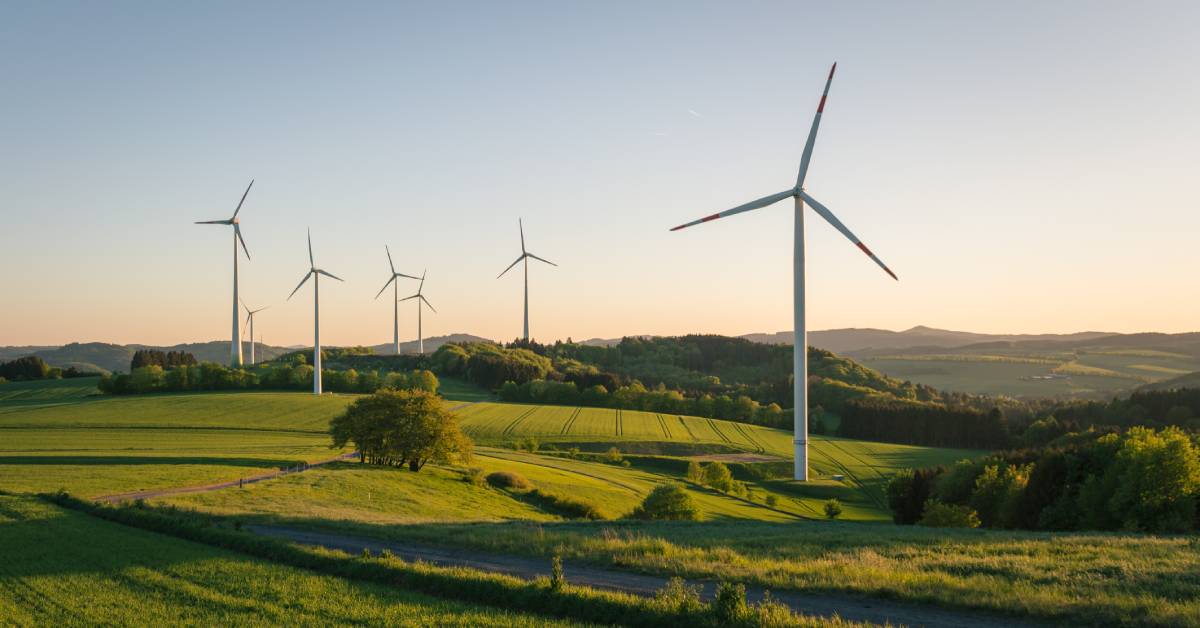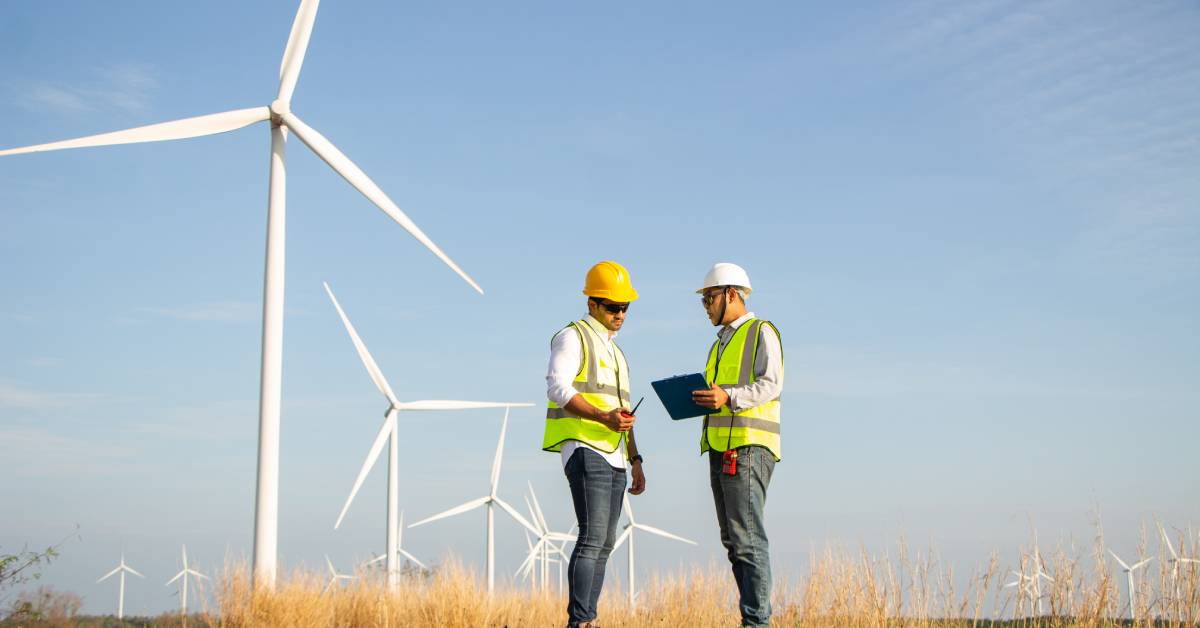When you think about green energy, wind turbines probably come to mind. These impressive, towering structures generate clean, renewable energy, and maintaining them requires a lot of high-risk work. These tips and insights will help with improving safety in wind turbine maintenance.
Understanding the Risks Involved
Working on wind turbines comes with unique challenges. The height alone can be intimidating. Technicians often work hundreds of feet above the ground, battling strong winds and fluctuating weather.
Mechanical failures and electrical hazards add to the complexity. Recognizing these risks is the first step toward improving safety. Technicians must be well-versed in safety protocols and emergency procedures.
Make sure to prioritize education for your workers in order to mitigate risks. Hands-on training programs help workers familiarize themselves with real-world scenarios. Knowledge reduces anxiety and boosts confidence, making high-altitude tasks more manageable.

Essential Safety Gear
Safety gear is indispensable in wind turbine maintenance. Helmets, harnesses, and gloves might seem basic, but they’re lifesavers. High-quality gear designed specifically for wind turbine work offers superior protection.
Employers should provide gear suited to different weather conditions, including cold, wet, or windy environments. Specialized equipment ensures technicians can work safely regardless of the weather.
Routine Inspections and Maintenance
Performing routine inspections is a good way to improve safety in wind turbine maintenance. Regular checks help workers detect and address abnormalities, which prevents accidents. Technicians should follow a strict inspection schedule and examine every component meticulously.
Detailed records of inspections are also essential. Keeping track of who checked what and when they checked it ensures accountability.
The Role of Quality Products in Safety
Quality products play a crucial role in safety, and using high-grade parts and materials reduces the risk of failure. Santie Oil Company provides top-tier wind turbine grease, which can help to improve operational safety and efficiency during turbine maintenance.
Routine maintenance using quality products extends the lifespan of wind turbines. Well-maintained turbines are less prone to breakdowns, which reduces the frequency of repairs and minimizes exposure to risks.
Effective Communication Practices
Miscommunication can lead to errors and put everyone at risk. Using technology to aid communication can be beneficial. Use two-way radios to convey real-time updates. Mobile device apps designed for maintenance teams can offer additional support. Regular team meetings foster a culture of communication, so it’s important to have daily briefings or weekly reviews to keep everyone informed.

Leveraging Technology and Automation
Companies can use drones to inspect turbines without putting technicians at risk. These devices provide high-resolution images so that workers can identify potential issues from a safe distance.
Automation is another game-changer. Automated systems can monitor turbine performance, alerting technicians to anomalies. Predictive maintenance tools analyze data and predict when parts are likely to fail. Addressing issues proactively minimizes risks to workers and enhances safety.
Promoting a Safety-First Culture
Safety should be a core value of your company and evident in every aspect of operations. Leadership can recognize and reward safe behavior to reinforce positive practices.
Employee involvement in safety initiatives also strengthens commitment. Encourage technicians to participate in safety committees or suggest improvements. Involving employees in decision-making processes makes safety measures more practical and effective.
Continuous Improvement and Feedback Loops
Continuous improvement is vital for maintaining high safety standards. Regularly review safety protocols and make necessary adjustments. Soliciting feedback from technicians provides valuable insights because employees on-site often have the best perspective on what works and what doesn’t.
Additionally, implementing a feedback loop encourages open dialogue. Technicians should feel comfortable reporting safety concerns without fear of reprisal. Creating an environment that welcomes feedback leads to ongoing improvements. You might even adopt best practices from other organizations to drive improvement and elevate safety standards at your company!
Emergency Preparedness and Response
Being prepared for emergencies is non-negotiable. Establish comprehensive emergency response plans that cover various scenarios. Doing drills regularly ensures that everyone knows their role during an emergency, which can build up familiarity and confidence while reducing panic in real situations.
Emergency equipment, such as first aid kits, fire extinguishers, and rescue gear, must be readily available. Technicians should learn how to use this equipment by undergoing training sessions on emergency response gear.
Clear evacuation procedures are another critical part of emergency preparedness. Technicians should know the quickest and safest routes off and away from the turbine because every second counts in an emergency.
Mental and Physical Well-being
The demands of wind turbine maintenance can be stressful, and if employees aren’t coping, they may lose focus and fall victim to accidents. Luckily, offering counseling services can improve employee well-being. You should also promote a healthy work-life balance by encouraging employees to take time off and disconnect from work when needed.
Physical fitness is equally important. Technicians need to be in good shape to handle the physical demands of the job. Encourage regular exercise, and provide fitness resources to all team members.
Adequate rest is crucial for doing great work. Fatigue can impair judgment and reaction times. Giving your employees sufficient rest between shifts helps them stay alert on the job. Make sure to encourage open communication between employees and management about any physical or mental health concerns that may negatively affect job performance.
Adapting to Changing Conditions
Weather conditions can change rapidly, and technicians must be ready to adapt. Monitoring weather forecasts helps with planning maintenance activities. Flexible scheduling can also accommodate weather-related delays. Establishing a contingency plan ensures that maintenance can continue safely when conditions improve.
Employees can train for adverse weather conditions, such as high winds or lightning strikes, through simulated scenarios. Preparedness for all eventualities is a hallmark of effective safety protocols.
Leveraging Data for Safety Insights
Data analytics can offer insights into safety. Analyzing maintenance records and incident reports helps to identify trends. Then, managers can understand the causes of issues and create better safety strategies for turbine maintenance. Combining information from sensors, maintenance logs, and worker feedback creates a holistic picture. This integrated approach reveals weak points and areas for improvement.
Improving safety in wind turbine maintenance requires a multifaceted approach, and every element plays a role. By focusing on continuous improvement and utilizing quality products from Santie Oil Company, you can create safer working environments for your technicians.

